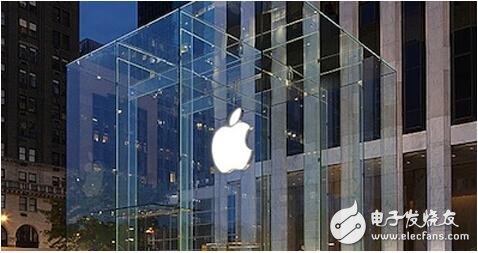Editor's Note: According to experts' predictions, in the future, the most demanding areas for sensors should be IoT nodes and smart terminal devices. With the development of IoT applications, the global sensor industry is showing “continuous innovation†and “rapid developmentâ€. trend. Among them, the smartphone manufacturer headed by Apple is also rapidly cutting into the sensor field, in order to grasp the evolutionary initiative of technology development in the Internet of Things era. Semiconductor manufacturers are also seeking killer applications in the Internet of Things era. The latest ISSCC conference brings the latest views of many big coffee companies in the industry.
Apple is heavily invested in chips, the next focus is on sensors
According to CNBC, the US financial news website, Apple CFO Maastrich participated in the "Goldman Sachs Technology and Internet Conference" held in San Francisco. He revealed that the increase in Apple's R&D expenses is mainly due to Apple's investment in R&D resources in the chip and sensor fields. Apple believes that these R&D are very strategic and important for the company's development.
Maastrich did not disclose how much money was invested in chip development last year.

Maastrich mentioned that a few years ago, the technology development of Apple related products was more completed by suppliers, but Apple began to do more basic research in the basic technology field, mainly processors and sensors.
In 2016, Apple's research and development costs reached $10 billion, much higher than the $8.1 billion in 2015 and $6 billion in 2014. In terms of sales revenue, Apple spent 5% of its revenue last year on research and development, which is higher than the previous 3%.
In the chip field, Apple has been designing its own A-series processors and handing them over to Samsung Electronics and TSMC for OEM. Apple does not need to purchase application processors from Qualcomm, which has become a differentiated highlight of Apple's mobile phones. In addition, Apple is also designing special chips for various small devices, such as Apple Watches, wireless headphones and so on.
Maastrich also said that Apple's product line is more abundant than in the past, and more research and development content, which also led to an increase in research and development costs. In addition, in some products that cannot generate large-scale income, Apple has also invested a certain amount of research and development expenses, and the company is willing to regard these inputs as a bet on future business development.
Although Apple's research and development costs are rising, in the technology industry, Apple has always been known for its low R&D costs. At the end of last year, foreign media statistics showed that Samsung Electronics ranked top in the global technology industry R & D investment (this is three times Apple's investment), Intel, Microsoft, Google (microblogging) and other companies ranked behind Samsung Electronics. And Apple's research and development costs did not enter the top ten.
Low R&D costs also pose a huge risk to Apple. In the current hottest autopilot technology in the technology industry, a new generation of electric vehicles, augmented reality, virtual reality, artificial intelligence, machine learning and other fields, Apple has significantly fallen behind competitors and acts as a chaser.
Huawei set up a team of 100 people to develop autonomous voice assistant
Recently, Huawei has also made new moves in its own voice assistants. According to foreign media reports, unnamed sources revealed that Huawei plans to develop autonomous voice assistant service to enter the highly competitive voice assistant market. One source said that a team of more than 100 engineers was developing voice assistant services in Shenzhen, and development work is still in its early stages. The Huawei Voice Assistant project has a grand target, targeting Apple Siri, Amazon Alexa and Alphabet Google Assistant, rather than other small characters.
A source said that Huawei voice assistants support Chinese and are aimed at domestic users. Huawei will continue to cooperate with Google and Amazon in overseas markets.

The development of autonomous voice assistant service helps Huawei to stand out among many Chinese smartphone manufacturers. Due to legal reasons, many Google services have not been able to enter the Chinese market.
Huawei plans to increase its revenue from its business operations to RMB 226.5 billion this year. Huawei is aggressively entering the high-end smartphone market, second only to Apple and Samsung in the global smartphone market.
The development of voice assistants by a major Android smartphone manufacturer may pose another major obstacle for Google. Huawei announced last month that its Mate9 smartphones sold in the US are pre-installed with Alexa. Currently, Google Assistant only runs on Google Pixel smartphones, Home smart speakers and smart watches running the latest version of AndroidWear software. Informed sources said that Google is trying to convince third-party equipment manufacturers to pre-install their voice assistants.
Huawei and Google did not comment on this.
Huawei is not the first Android device vendor to independently develop voice assistants. Samsung last year acquired Viv Labs, a startup founded by some Siri developers, and plans to release its first product with its voice assistant pre-installed later this year. Baidu announced the voice assistant service in 2015.
Audio Line Transformer,10W 6Ohm Audio Line Transformer,Audio Line Transformer 100V,Audio transformer for amplifier
Guang Er Zhong(Zhaoqing)Electronics Co., Ltd , https://www.gezadapter.com